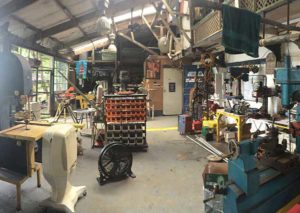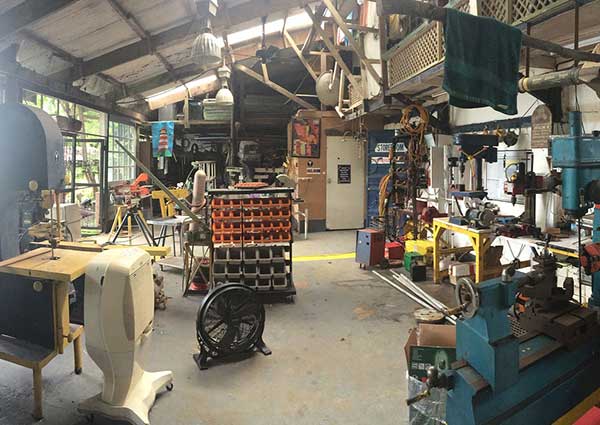Disclaimer: The information on our website is provided for general information purposes only. We make no representations or warranties of any kind, express or implied, about the completeness, accuracy, reliability, suitability or availability with respect to the website or the information contained on our website for any purpose. Any reliance on such information is therefore strictly at your own risk and we are not liable for any damages or losses arising out of or resulting from your reliance on any information contained on our website.
A machinist and tool and die maker operates and sets up many different mechanically controlled and computer-controlled machine tools. Additionally, they may use CAD (computer-aided design) to produce parts and products. Next, watch a video to learn what a machinist does.
How to Become a Machinist

Machinist and tool and die makers require a high school diploma or the equivalent with suggested classes in math, drafting, metal working, and blueprint reading. Experience with computers is also needed. Machinists usually train in apprenticeship programs, trade schools, community colleges, and on-the-job. Programs in community colleges and trade schools take 2 years to complete with courses that teach using wielding and cutting tools, blueprint reading, and programming and function of computer numerically controlled (CNC) machines.
Tool and die makers commonly receive on-the-job training that lasts 1 year or more. Some manufactures sponsor apprenticeship programs but these can be difficult to enter. Apprenticeship training has paid shop training and related technical instruction that lasts several years. Local community colleges and vocational and technical schools often cooperate by providing the technical instruction. The apprentice typically works a 40 hour week and receives technical instruction at night. Machinist and tool and die makers need to get experience in using computers to work with CAD/CAM technology, CNC machine tools, and computerized measuring machines.
Job Description of a Machinist
Machinists typically work from sketches, blueprints, or computer-generated files. They set up, operate, and disassemble machine tools and manual tools. They also align, adjust, and secure workpieces and cutting tools as well as monitor the speed and feed of machines. The shape, drill, turn, grind, and mill machine parts to specifications. He or she presents finished products to customers and may make needed modifications.
Machinists also compute and verify tolerances, sizes, dimensions, and shapes of workpieces to ensure all parts fit together properly and test tools and dies to meet specifications. They work in machine shops, factories, and tool rooms, usually on a full-time basis.
Machinist Career Video Transcript
To build everything workshops and factories around the country rely on the handiwork of machinists, and tool and die makers. Starting from blueprints, sketches, or computer-aided design files, they set up the machines that produce parts. Once products are made, machinists file and grind them to meet project specifications, giving them a final smoothing and polish to finish. Machinists run computer numerically controlled (CNC) machines that produce precision metal parts and tools. They may produce a large number of one part, such as automobile pistons or many small batches, like bone screws for medical implants or even one-of-a-kind items. They need to be skilled with a wide range of machines and techniques.
Toolmakers craft precision tools for cutting and forming metal, and create different gauges and other measuring devices. Die makers construct metal forms used to shape metal, and make molds for shaping plastics, ceramics, and composite materials. Tool and die makers are trained to write CNC programs as well as operate the machines. Workers wear safety glasses, earplugs, and masks when needed to protect themselves during hazardous phases of their work.
Schedules are generally full-time, with some shifts on evenings and weekends to keep production running around the clock. A high school diploma or equivalent is necessary, and skills in math and problem-solving are important. Machinists may train in on the job, apprenticeship, or at technical colleges. Becoming a tool or die maker takes several years of instruction and on-the-job training.
Article Citations
Bureau of Labor Statistics, U.S. Department of Labor, Occupational Outlook Handbook, Machinist and Tool and Die Makers.
National Center for O*NET Development. 51-4041.00. O*NET OnLine.
The career video is in the public domain from the U. S. Department of Labor, Employment and Training Administration.

